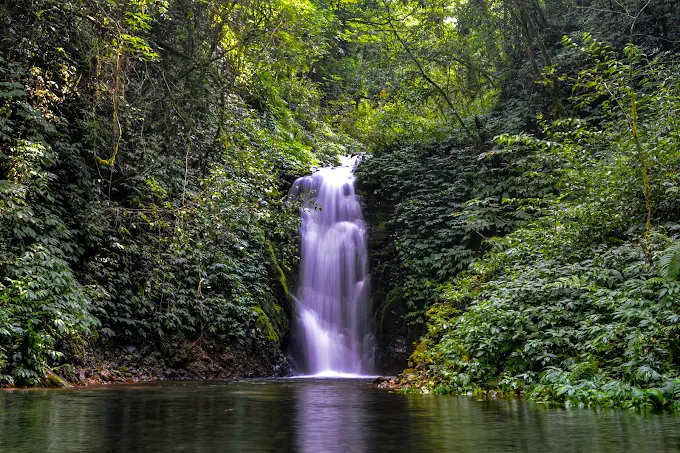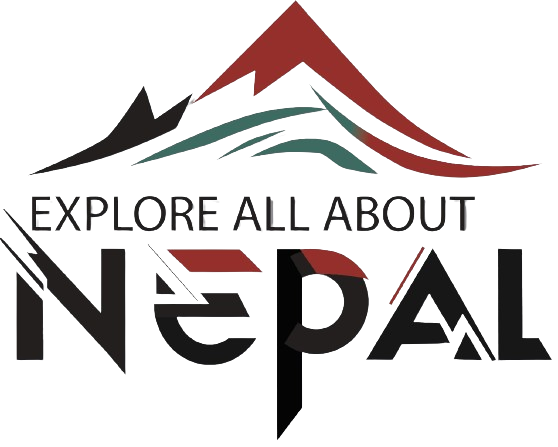If you are searching for an offbeat destination close to Kathmandu, away from the tourist crowds, Konjyosom Waterfall should be on your travel list. Tucked deep inside the lush forests of Lalitpur’s Konjyosom Rural Municipality, this hidden waterfall offers a refreshing escape into nature. Unlike other famous waterfalls in Nepal, Konjyosom Waterfall remains relatively unknown, making it perfect for those who want peace, solitude, and adventure.

Konjyosom Waterfall
In this detailed guide, we will explore the location, routes, cultural importance, and practical tips for visiting Konjyosom Waterfall, so that travelers can plan a safe, memorable, and authentic trip.
Where is Konjyosom Waterfall?
Konjyosom Waterfall is located in Konjyosom Rural Municipality, Lalitpur District, Bagmati Province. It is surrounded by dense forests and is one of the less-explored attractions near the Kathmandu Valley. The word Konjyosom comes from the Tamang language, which translates to Gautama Buddha. This reflects the cultural and spiritual importance of the area.
The municipality itself includes villages such as Bhardev, Dalchoki, Nallu, Sankhu, and Chaughare, making the entire region rich in natural beauty and Tamang heritage.
How to Reach Konjyosom Waterfall
Getting to Konjyosom Waterfall is an adventure in itself. There are multiple routes depending on where you begin:
1. From Panauti (Kavrepalanchok)
Travel towards Roshi Waterfall, but do not cross the bridge.
Continue straight for about 10–20 minutes towards Baire Mahadev.
From there, hike for about 1 to 1.5 hours through serene forests until you reach Konjyosom Waterfall.
2. From Kathmandu Valley (via Bhardev, Lalitpur)
Many visitors prefer the Bhardev route since it is closer to Kathmandu.
You can reach Bhardev by motorbike, jeep, or local transportation.
From there, follow the trail that takes you through rural villages and into the forest, leading to the waterfall.
3. From Jhamsikhel (Alternative Route)
Some travelers choose to start from Rato Ghar, about 1.5 to 2 hours by bike from Jhamsikhel.
From Rato Ghar, it’s another 1–2 hours of trekking through scenic landscapes.
Travel Tip: Always ask locals for directions around Baire Mahadev, as small trails can be confusing. Carry offline maps or save the route before traveling.
What Makes Konjyosom Waterfall Special?
Unlike commercialized waterfalls, Konjyosom Waterfall is still untouched. Here’s why travelers find it unique:
Pristine Nature – A dense forest trek leads to the waterfall, with the sound of birds and fresh air adding to the experience.
Peaceful Escape – The area is far less crowded compared to other waterfalls near Kathmandu.
Cold Refreshing Waters – The water is chilling, almost like an ice bath, offering a rejuvenating experience.
Cultural Elements – On the way, you can spot Konjyosom Pratima (statues of Amitabha Buddha, Padmasambhava, and Avalokiteshwara), giving the trek a spiritual atmosphere.
Best Time to Visit Konjyosom Waterfall
The best time to visit Konjyosom Waterfall is during the monsoon and post-monsoon seasons (June to September) when the water flow is strong and the forest is green. However, this also makes trails slippery, so wear proper trekking shoes.
For those who prefer safer trails, spring (March to May) is also a good time, with moderate water flow and pleasant weather.
Avoid peak winter as the water becomes extremely cold, and the trails can be difficult due to frost and fog.
Things to Do Around Konjyosom Waterfall
Visiting Konjyosom Waterfall can be combined with other nearby attractions:
Konjyosom Pratima – Three golden Buddha statues overlooking the valley.
Baire Mahadev Temple – A small spiritual stop before the waterfall trek.
Dalchoki Village – Known for its stunning views of the Himalayas and rich Tamang culture.
Panauti Town – A historic Newari town with temples and cultural heritage sites.
By combining nature and culture, your trip becomes more rewarding.
Practical Tips for Travelers
To make the most out of your trip to Konjyosom Waterfall, keep these tips in mind:
Transportation: Motorbikes are convenient, but jeeps are better during rainy seasons.
Hiking Gear: Wear sturdy trekking shoes, carry water bottles, and light snacks.
Safety: The water can be slippery; avoid climbing wet rocks.
Respect Nature: Carry your trash back, avoid littering, and respect local customs.
Guides: If you’re not familiar with the area, consider hiring a local guide.
Why Visit Konjyosom Waterfall?
In a country filled with majestic mountains, temples, and rivers, it’s easy for hidden gems to remain unnoticed. But Konjyosom Waterfall stands out because it combines natural beauty with cultural value. It’s not just a destination—it’s an experience of hiking through serene forests, discovering Buddhist statues, and refreshing your soul in crystal-clear waters.
For adventure seekers, it offers a chance to trek off the beaten path. For cultural travelers, it highlights the Tamang community and spiritual landscapes of Lalitpur. And for locals of Kathmandu Valley, it is a perfect one-day getaway.
FAQs About Konjyosom Waterfall
1. How far is Konjyosom Waterfall from Kathmandu?
It takes around 2–3 hours by road and trek, depending on the chosen route.
2. Is there an entry fee?
Currently, there is no official entry fee for visiting Konjyosom Waterfall, but small contributions to local communities are appreciated.
3. Can I swim in the waterfall?
Yes, but the water is very cold and slippery, so swim cautiously.
4. Is Konjyosom Waterfall suitable for families?
Yes, but make sure children are supervised during the trek and near the water.
5. Do I need a guide?
If you are confident in hiking and navigation, you may not need one. However, hiring a local guide supports the community and ensures you don’t get lost.
Konjyosom Waterfall is more than just a natural attraction it’s a journey into the unexplored side of Lalitpur. It combines pristine landscapes, spiritual vibes, and rural charm, making it a must-visit destination for anyone seeking authentic experiences in Nepal.
If you are tired of the crowded tourist spots in Kathmandu and want something different, plan your trip to Konjyosom Waterfall. Not only will you enjoy nature at its best, but you’ll also discover the hidden stories of rural Nepal.
Have you visited Konjyosom Waterfall before? Share your experience in the comments below and inspire fellow travelers!

